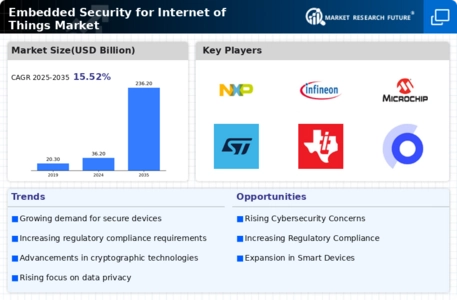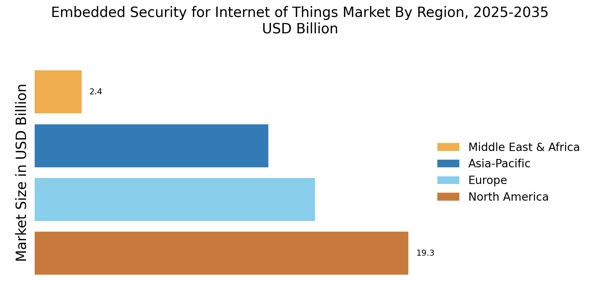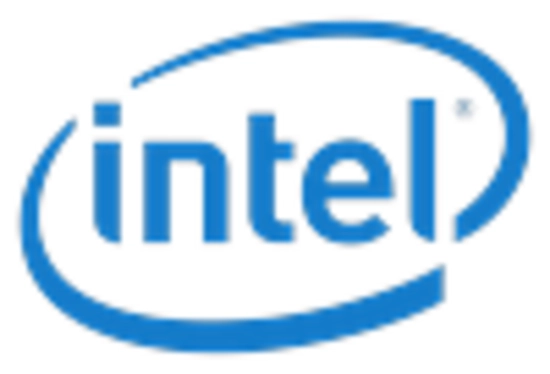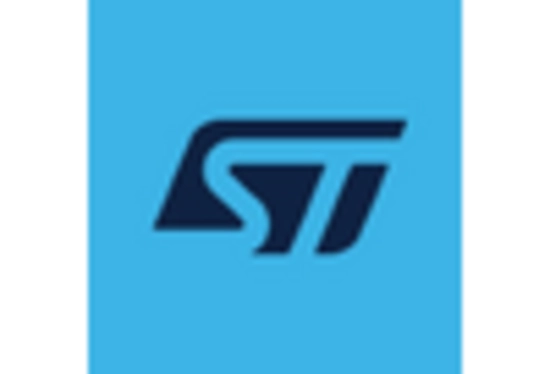The Embedded Security for Internet of Things Market is currently characterized by a dynamic competitive landscape, driven by the increasing demand for secure IoT devices across various sectors, including automotive, healthcare, and smart home applications. Key players such as Arm Holdings (GB), Intel Corporation (US), and NXP Semiconductors (NL) are strategically positioning themselves through innovation and partnerships to enhance their market presence. Arm Holdings (GB) focuses on developing advanced security architectures that cater to the growing need for secure IoT solutions, while Intel Corporation (US) emphasizes its commitment to integrating AI capabilities into its security offerings, thereby enhancing device intelligence and responsiveness. NXP Semiconductors (NL) is actively pursuing regional expansion, particularly in Asia, to capitalize on the burgeoning IoT market in that region, which collectively shapes a competitive environment that is increasingly reliant on technological advancement and strategic collaborations.
In terms of business tactics, companies are localizing manufacturing and optimizing supply chains to enhance efficiency and reduce costs. The market structure appears moderately fragmented, with several key players exerting considerable influence. This fragmentation allows for a diverse range of solutions, yet the collective strategies of these major companies indicate a trend towards consolidation and collaboration, as they seek to leverage each other's strengths to address the complex security challenges posed by IoT devices.
In August 2025, Intel Corporation (US) announced a partnership with a leading cybersecurity firm to develop a new suite of security solutions specifically designed for IoT applications. This strategic move is likely to enhance Intel's competitive edge by integrating advanced threat detection capabilities into its existing product lines, thereby addressing the growing concerns around IoT security vulnerabilities. Such partnerships not only bolster product offerings but also signify a shift towards collaborative innovation in the sector.
In September 2025, NXP Semiconductors (NL) launched a new security platform aimed at automotive applications, which incorporates advanced cryptographic techniques to safeguard vehicle communications. This initiative underscores NXP's commitment to enhancing security in the automotive sector, where the proliferation of connected vehicles necessitates robust security measures. The launch is expected to position NXP as a leader in automotive security solutions, potentially attracting new partnerships with automotive manufacturers.
In October 2025, Arm Holdings (GB) unveiled a new initiative focused on developing open-source security frameworks for IoT devices. This initiative is indicative of a broader trend towards transparency and collaboration in security solutions, as it allows developers to build upon established security protocols, thereby fostering innovation. By promoting open-source solutions, Arm is likely to enhance its reputation as a thought leader in the embedded security space, which could lead to increased adoption of its technologies across various industries.
As of October 2025, the competitive trends in the Embedded Security for Internet of Things Market are increasingly defined by digitalization, sustainability, and the integration of AI technologies. Strategic alliances are becoming more prevalent, as companies recognize the need to pool resources and expertise to tackle the multifaceted challenges of IoT security. Looking ahead, competitive differentiation is expected to evolve from traditional price-based competition towards a focus on innovation, technological advancement, and supply chain reliability, as companies strive to deliver secure, efficient, and intelligent IoT solutions.

















Leave a Comment